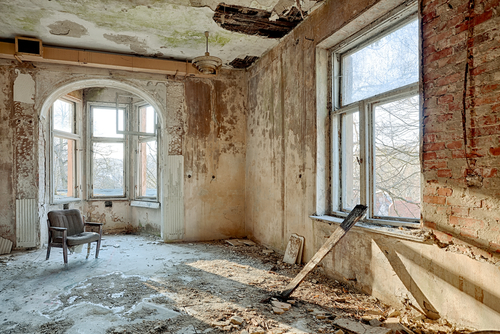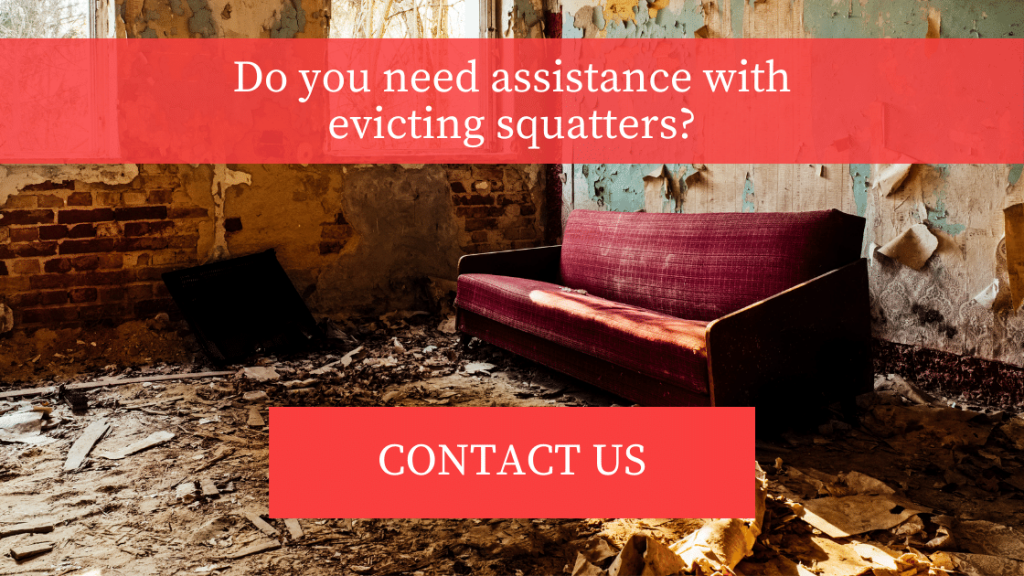As a landlord, one of the things that will always be on your mind is the problem of squatters. Having squatters move in then legally dealing with evicting them is a time consuming, stressful and potentially costly endeavour but often the only way to re-take your property. But ensuring everything is done correctly is very important. So how can you evict squatters legally in the UK?
What is a squatter?
A squatter is defined as someone who deliberately enters a property without the permission of the owner with the intent to live there. It is sometimes known by the more formal term of ‘adverse possession’. Many landlords dislike squatters, not only because they aren’t paying rent, but because it’s an invasive practise and many squatters litter or do damage to properties they occupy.
Squatting in a residential building such as a house or flat is a criminal offense. If someone does, they can see a 6 months prison sentence, a fine of up to £5000, or more often, both. However, if someone enters the property with the permission of the landlord and then stops paying rent, they are not classed as a squatter.
It is also against the law not to leave the property when you are instructed to do so by the owner of the house as well as by the police, the council or if there is a repossession order in force.
What are squatters’ rights in the UK?
What can make the matter more complex is what is known as squatter’s rights to property. A long-term squatter can become the registered owner of property or land that they’ve occupied without the owner’s permission under specific circumstances. The squatter needs to prove:
- They or other squatters have occupied the property for at least 10 years continuously or 12 years if it is not registered with HM Land Registry
- They or predecessors have acted as the owner of the property for that whole period
- They or predecessors did not have the owner’s permission to be in the property – in other words, they weren’t previous tenants
However, for most landlords, they would take action to deal with the situation before this period of time had elapsed, or before the property can be damaged. In that case, it is then about ensuring the squatters are evicted legally.
The Legal Process of Evicting Squatters
There are two processes depending on if the property is a residential or a commercial one. In all cases, you should not try to remove the squatters yourself using force or even the threat of it because you are then breaking the law.
Removing Squatters from residential property
To remove residential squatters, you can either use an interim possession order (IPO) or make a claim for possession.
Interim possession order
To use an IPO, it must have been 28 days or less since you discovered the squatters. This is filed with the local county court who will send confirmation within a few days that means you must give it to the squatters within 48 hours.
Once they have been served with the paperwork they must leave the property within 24 hours and stay away for 12 months. You can then make a claim for possession.
There are two situations where you can’t use an IPO:
- If you are making a claim for damages caused by squatters, in which case go straight to a claim for possession
- If you are trying to evict former tenants, sub-tenants or licensees
Claim of possession
The other route is called a claim of possession which allows the landlord to bring a possession claim against trespassers and squatters. It can only be brought against the person or persons who entered and remained in the property without the owner’s consent so cannot be used to evict a tenant.
You can apply to the court for the order at the county court for the district where the property is located. Proceedings may be issued by the High Court if there’s a risk of public disturbance or serious harm to people or property.
Form N5 and N121 are completed to make the claim of possession and identify the property, the landlord’s interest in the property and the circumstances it was occupied without license or consent. It will also provide any details about the people squatting if this is known.
Once the claim of possession has been issued, it must be served to the squatters. This can be done by attaching copies to the main door or another prominent part of the residential property or by adding in a sealed transparent envelope and delivered to the property. There must be at least five clear days between the serving and the hearing date.
If no agreement is reached between the parties, the case will go to a hearing and the court will decide on what happens next. If the landlord wins the case, then the enforcement issue then needs to be handled. This involves a warrant of possession from the court and court bailiffs to handle the procedure.
Evicting squatters from a commercial property
In many cases, squatter evictions from commercial premises are simple and quick with the use of an enforcement officer to access the property and evict the squatters. They will usually have a police presence to ensure no breach of the peace occurs.
In this situation, an eviction can happen within 24 to 48 hours without the need for a court order.
However, if this isn’t an option, then the processes are similar to those for residential properties. You can claim for possession and have a summary possession order (SPO) put in place. This can lengthen the timeframe for the eviction to several weeks and also leaves the property open to the risk of damage so acting quickly is always the best option.
Can you physically remove a squatter?
As a landlord, you cannot physically remove a squatter without the risk of being involved in a criminal activity yourself. Under Section 6 of the Criminal Law Act 1977, if a squatter physically is present, then a landlord cannot remove them.
This is where an enforcement officer or bailiff is required to handle the physical eviction process. They are trained and legally allowed to carry out evictions and know what they can and cannot do under the current laws.
How long does it take to get squatters evicted?
The process of evicting squatters can take very different time periods, depending on the circumstances. If you have a commercial property and they have moved in within 28 days, the eviction could take as little as a day or so.
However, if the case needs to go to court, then this could take a lot longer, depending on the time frame from the court – backlogs are also a big issue in the post-pandemic period.
Getting the right help with evicting squatters
Squatters are always a worry for residential and commercial landlords and while measures taken to prevent them from gaining access is always best, sometimes it happens.
If you find yourself having to deal with evicting squatters from a commercial property, Able Investigation has the trained, qualified and licensed staff to handle it for you. Call us today to discuss more about your case.




Comments are closed.